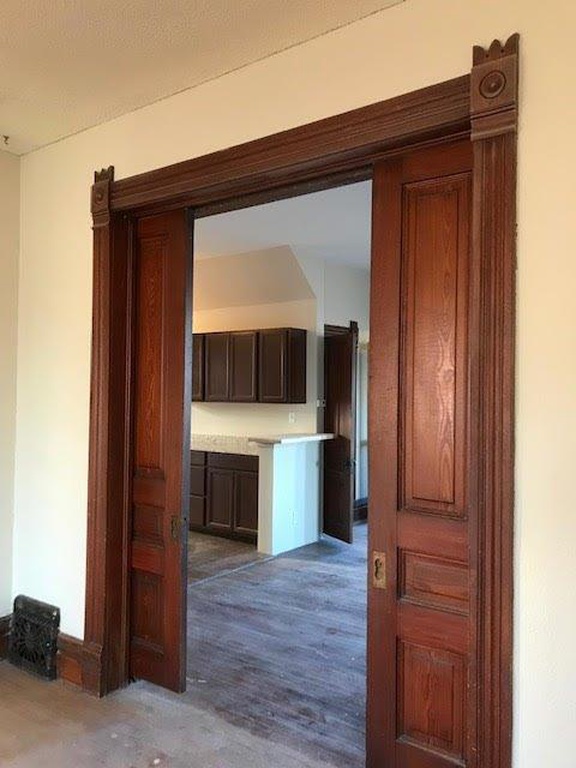

#Pocket doors ipaint deas historic update
House numbers engraved on glass panels or in metal began to appear on front doors.Īntique/vintage style is now very much in vogue, so whether you’d like a Victorian front door created to update the look of your home, or you wish to restore your period property, we can help you. Cast iron foot scrapers were also a traditional feature beside a front door. By 1850 the use of brass became more widespread and front doors had shining brass bell pulls, finger plates and letter boxes. Style Pocket doors go with any design style from historic to contemporary. Appearance Pocket doors have a unique and custom look that will set your home apart from others. Pocket doors save around ten square feet compared to a traditional door.
#Pocket doors ipaint deas historic install
That said, there are three basic types: single roller, double roller, and trolley style. Space saving The best reason to install a pocket door is to save space. The ledged door was also found on back entrances.Ĭast iron was a popular metal used on door furniture in the first half of the century, designs for door knobs, knockers and hinges echoed back to the previous century with designs like lions heads, dolphins and urns. Thanks to a proliferation of pocket-door hardware manufacturers in the late 19th century, the mechanisms vary more than those for floor-track doors. In contrast to the impressive front doors of the upper and middle class homes many simple homes had basic wooden ledged doors made of tongue and groove boarding, with horizontal planks to strengthen the planks. Towards the end of the century Art Nouveau became fashionable and the curved shapes were particularly well suited to stained glass designs. Morris encouraged the art of painting the glass as well as stained glass. Doors were being decorated with beautiful glass panels, created by William Morris with floral patterns and designs based on medieval themes. The Gothic revival and the Arts and Crafts movement in the middle of the century resulted in a resurgence of interest in the use of stained glass. Initially only the two upper panels were glazed but by the 1880’s the entire top half of a door might include leaded panes and patterned coloured stained glass.

However the development of glazing and the manufacture of larger panels of glass in the late 1830’s enabled glass to be incorporated into the front door. Many doors still had fanlights above, typically in the traditional Georgian style but decorated with intricate ironwork designs. If there was no porch, some doors had a hood above, to protect one from the weather.Ĭolours used on doors became brighter during the century. Each door is made from long-lasting timber and fitted with ultra-safe “Diamond Standard” snap-proof locks. We can design a door to match the charm and character of your building. We design and make Victorian style doors in our Nottingham-based workshop (but we can deliver further afield too.) Our period door designs are thoroughly researched, so they’re true to the era. Looking for a Victorian door for your property?


 0 kommentar(er)
0 kommentar(er)
